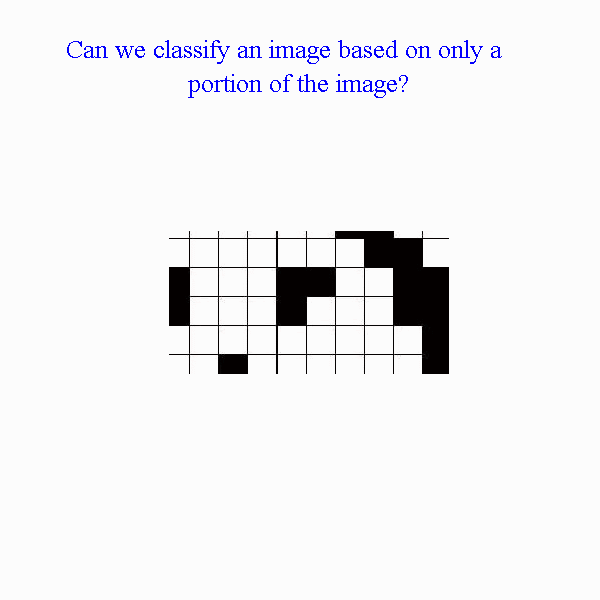2. Context in Image Classification
a. Lower Order Markov Chains3. Context in Text Recognition
b. Hilbert Space Filling Curves
c. Markov Meshes
d. Dependence Trees
a. A Quick Bit on Compound Decision Theory
b. Dictionary Look-up Methods
2. Context in Image Classification
Consider the animation below. It is a simple image that most human beings would have very little problem recognizing. However how would a computer do it? Consider the animation below as an Image classification problem with and without the contextual information. The animation demonstrates the usefulness of contextual information for image classification.
A brute force method of classification would be to use template matching.Toussaint Consider the above image on a pixelated grid that of n x m pixels. A typical manner of solving this problem would be to keep a list of all the patterns that can occur along with their labels describing what class they belong to. Compare the entire image and find the one that matches the current template. This method is top down method which is often called table look-up or dictionary look-up. However this method is extremely inefficient because the number of combinations which are possible cause an incredible burden on storage and computation since 2n x m combinations are possible. Also if some images belong to different classes then probabilities and dependence parameters must be computed.
This section will look at
the dependencies between pixels that exist as a lower-order Markov chain
which can be translated to a Hilbert Space filling curve in two dimensions.
This can further be translated to a Markov mesh. Dependence trees
will also be discussed as a manner of image recognition. Syntactic
rules are also another manner in which one can examine images for classification.
Previous:
Introduction
Next: Lower
Order Markov Chains